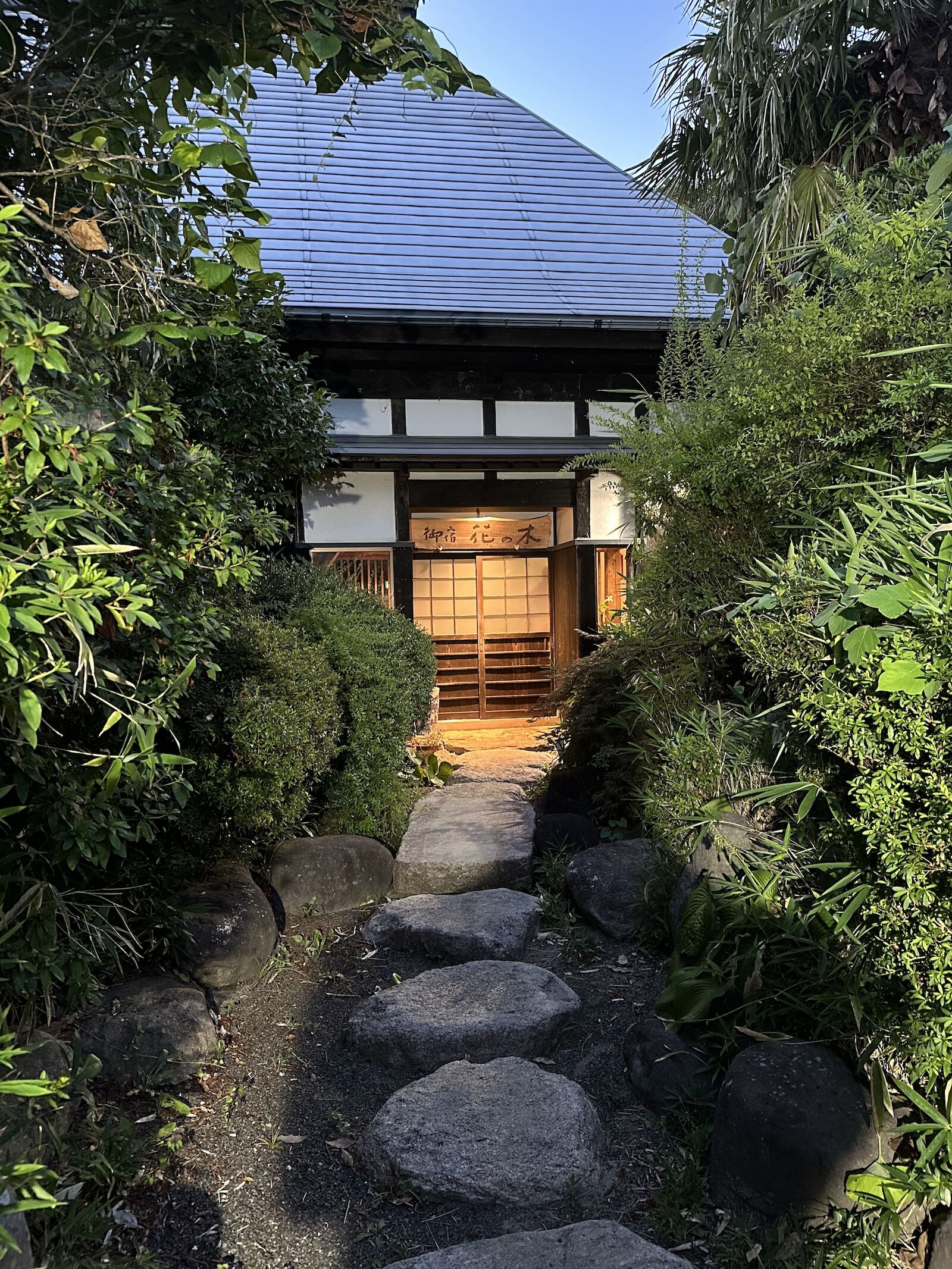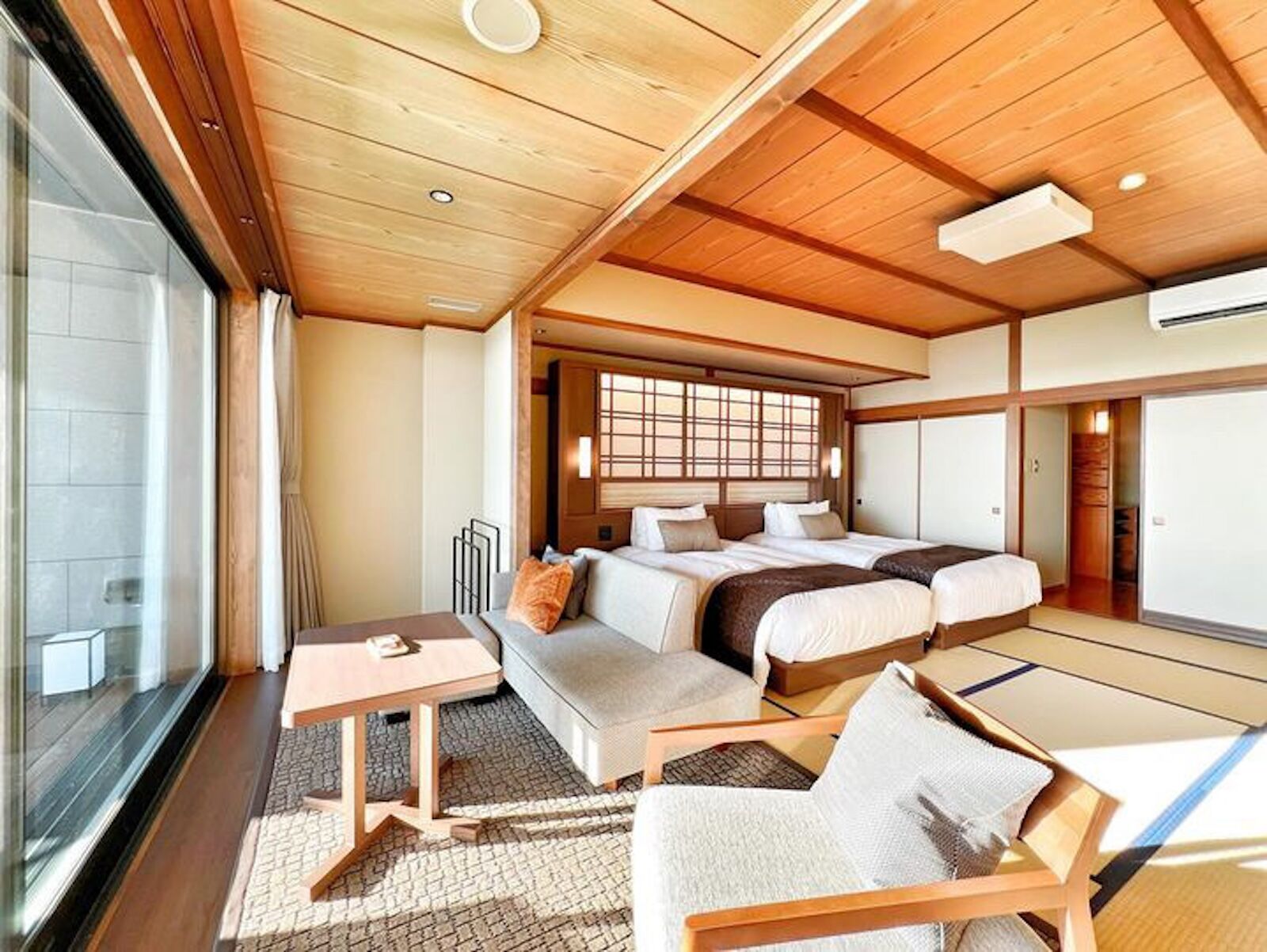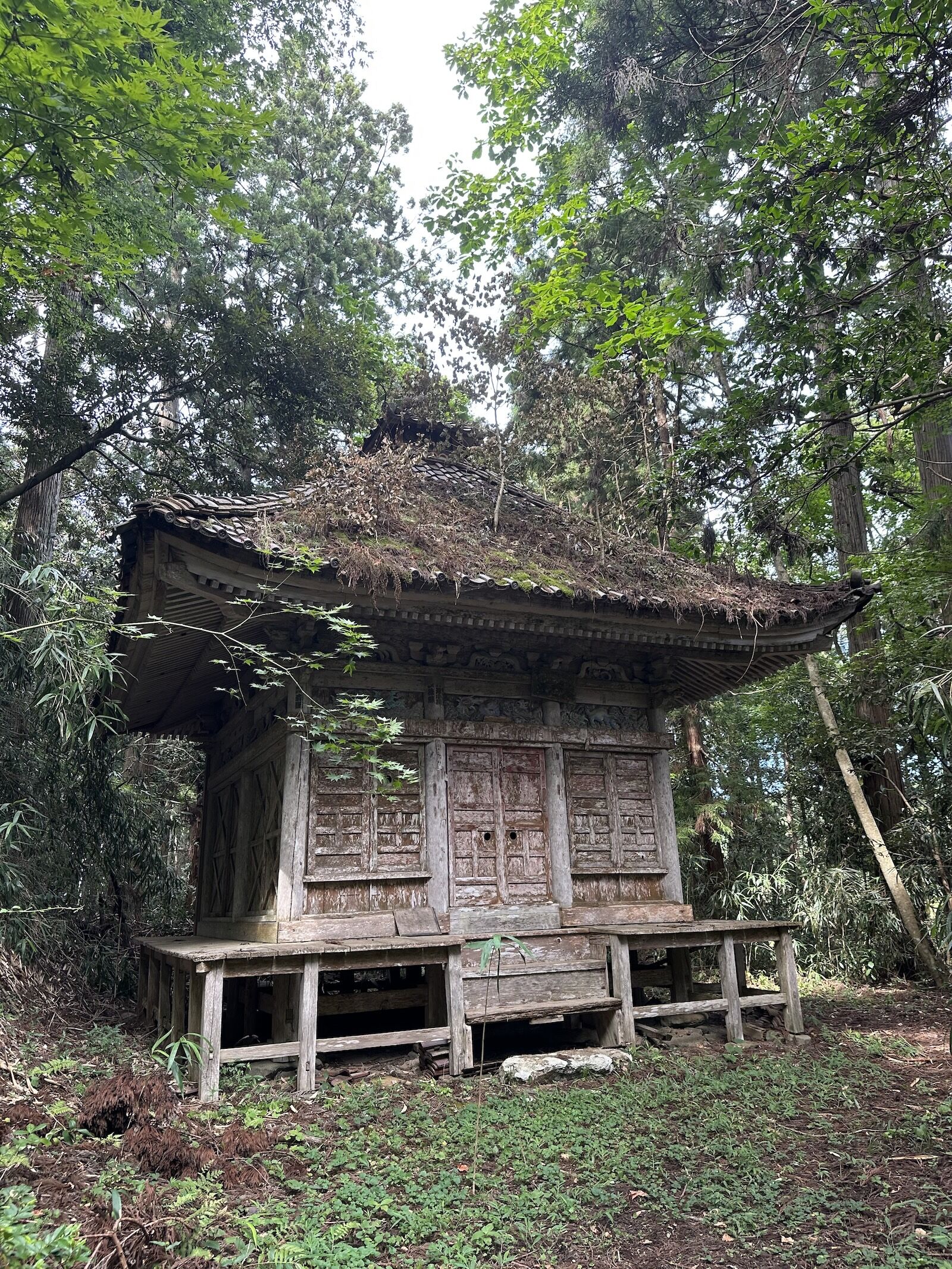Most first-time visits to Japan entail some variation of the Golden Route, the well-trodden circuit of Tokyo, Kyoto, and Osaka. As much as these awe-inspiring metropolises deserve their reputation among travelers, Japan’s quieter prefectures are equally fascinating and often overlooked. In the Japanese countryside, urban frenzy yields to village serenity; warm, rural hospitality wins the day; and whispers of Basho’s bucolic odes still echo through misty rice terraces. Plus, a quick sojourn in the hinterland to unwind in the steamy waters of an onsen refreshes the soul. And it’s not hard to get to whether you want to take a trip solely focused on the quieter areas of Japan or you simply want a quick break from the city.

Sado Is Japan's Food and Culture Island Getaway 3 Hours From Tokyo
Sado Island, three hours by train and ferry from Tokyo, is an idyllic getaway exemplifying the cultural and natural beauty of the Japanese countryside. Twenty miles off the coast of Honshu, the main trunk of the Japanese archipelago, Sado feels worlds removed from the frenetic crowds of Shibuya or the carnivalesque chaos of Akihabara. Rich soil and fecund shoals have for centuries supported fishing villages and rice farming, but not a single large city disrupts the isle’s tranquil rhythms.
While placid beaches, dazzling avian life, and emerald-hued topography promise endless delights for nature lovers, Sado is also a rich repository of the high court culture of medieval Kyoto. Heian emperors traditionally banished unruly aristocrats to Sado, and these exiles brought intangible treasures like noh theater, taiko dance, and Nichiren Buddhism to the island’s rocky shores. Also, for roving gourmands and sake lovers, Sado’s smorgasbord of idiosyncratic delicacies and celebrated rice ambrosias are alone worth the trip from Tokyo.
Where to stay on Sado Island
Sado’s mesmerizing scenery and gentle flow are best savored in a ryokan, a traditional inn constructed near an onsen, those geothermal hot springs long cherished across Japan for their medicinal benefits.
Hananoki Inn

Photo: Johnny Motley
Overlooking rice terraces awash with flocks of crested ibises, Hananoki Inn is the archetypical ryokan: stately wooden halls, constructed sans metal nails; minimalistic, serene accommodations; and an inner courtyard graced by a lovely zen garden. Spend the days exploring the local beach, reading with a cup of green tea, or decompressing in the healing waters of the nearby onsen. Each multi-course meal, called kaiseki, at Hananoki highlights seasonal and local ingredients, promising an unforgettable adventure for the palate. The menu changes frequently based on fishermen’s catches and seasonal produce, but the plates are always exquisite — especially when paired with pours of Sado Island sake.
Hananoki Inn: 78-1 Shukunegi, Sado, Niigata 952-0612, Japan
Hotel Azuma

Photo: Ryokan Wanderings / Hotel Azuma
Located on Sado’s westernmost extremity, Hotel Azuma marries the calm grace of a ryokan with the glamor of a luxury hotel. The hotel houses a renowned public onsen complete with hot pools, cold plunges, and oceanviews. Each room’s balcony also has a private outdoor tub, filled with the same steamy mineral water as the public baths. In the evening, marvel at blazing sunsets over the ocean while immersed in your balconyside onsen — an accompanying bottle of sake is not mandatory, but highly encouraged. For breakfast and dinner, Hotel Azuma treats patrons to kaiseki-style spreads of fresh and pickled fish, tea, artisanal tofu, and herbs foraged from the surrounding countryside.
Hotel Azuma: 548-1 Aikawa Oura, Sado, Niigata 952-1646, Japan
Where to eat and drink on Sado Island
Quilted by rice terraces and encompassed by waters teeming with fish, Sado yields a cornucopia of delicacies from land and sea. Delicate rice varieties thrive in Sado’s balmy climate and lush soil, and the island’s rice is widely considered some the finest in all of Japan. Seafood — especially seabream, squid, and small, sweet shrimp — are another hallmark of Sado’s cuisine.
Sushi Chozaburo
The masterful chefs at Sushi Chozaburo take local fishermen’s daily catches to craft heavenly plates of sashimi, nigiri, and maki. For a worthy splurge, order the sashimi of nodoguro, or black-throated seaperch. The tender white flesh, sliced paper thin and garnished with citrus, is a coveted treat in upscale sushi counters across Japan.
Sushi Chozaburo: 81-4 Niibo, Sado, Niigata 952-0116, Japan
Soba Mozem
Soba Mozem, a noodle house hidden down a country road, requires effort to find, but the goods awaiting inside are well worth the extra minutes of fiddling with Google Maps. Lunch begins with tempura-fried gifts-of-the-garden like eggplant, green beans, or daikon that are both surreally crunchy and airy. Next comes the famous soba, plates of cold noodles made from 100 percent buckwheat — a rarity even in Japan. The noodles, accompanied by nothing but a light, citrusy dipping sauce, highlight the nutty flavor and pleasing chewiness of the local buckwheat. In keeping with the theme of simple elegance, dessert is a light custard topped with local fruits and paired with a cup of refreshing green tea.
Soba Mozem: 163-1 Niibotanosawa, Sado, Niigata 952-0104, Japan
Obata Brewery

Photo: Johnny Motley
Connoisseurs across the world praise Sado Island’s sake for its complexity and dryness. While the island is home to a bevy of renowned breweries, the hallmark of most Sado Island sakes is a flavor profile called karakuchi, which means dryness enlivened with fruit and marine notes. To learn about the wonderful alchemy that renders rice, water, and koji into that hauntingly flavorful rice ambrosia, take a tour of Obata Sake Brewery. After touring the facilities, guests are invited to sample bottled treasures in a glass tasting room overlooking the sea.
Obata Sake Brewery: 449 Manoshinmachi, Sado, Niigata 952-0318, Japan
Yushokudo
Yushokudo specializes in wafu, Japanese-Italian fusion cuisine. A delicious hybrid born in the aftermath of World War II, when a large number of Italian-American GIs were stationed in Japan, wafu amalgamates Japanese ingredients like uni and fish roe into rich plates of pasta. For a hearty, decadent treat, try Yushokudo’s carbonara, prepared with umami-laden Japanese pork in lieu of traditional guanciale. Wash down all that delightful umami goodness with a hoppy pint from Toki Brewery, excellent beer crafted on Sado.
Yushokudo: 412 Manoshinmachi, Sado, Niigata 952-0318, Japan
Things to do on Sado Island

Photo: Johnny Motley
In the town of Niibo, visitors can learn about the tradition of onidaiko, exuberant dance and drum rituals believed to ward off evil spirits and ensure prosperous rice harvests. At Kaminiibo’s Onidaiko Center, master woodworkers carve ornate masks of oni, Japanese gargoyles, which dancers later don while stepping to the pulsing beats of taiko drums.
Sado’s red clay lends itself well to beautiful ceramics, and local potters have long been acclaimed for their exquisite stoneware. To the trained eye, Sado Island pottery, embellished with wave patterns and delicate florets, is instantly recognizable. You can buy excellent ceramics in most villages on Sado, or at the gift shop at the Sodayu Mines, a former gold mine converted into a historical landmark.

Photo: Johnny Motley
Sado, along with the larger province of Niigata, is Japan’s most robust stronghold of Nichiren Buddhism, a once viciously persecuted sect. At odds with Kyoto’s Buddhist clergy, a powerful class in Medieval Japan, Nichiren devotees fled to isolated Sado Island where they could practice their religion freely. Today, Nichiren temples, wooden architectural wonders riotously decorated with murals and statuary, still abound across the island. Set back in the forest and up a mountain trail, Seisuiji Temple is stunningly beautiful in the fall foliage or winter snow.
Strolling the serpentine cobblestone streets of Shukunegi, a fishing village of cozy wooden buildings, gives the feeling of stepping several centuries back in time. Set aside at least an hour to wander the village’s narrow alleys, marveling at Shinto shrines, a stately Buddhist temple, and sundry crafts shops and tea parlors. The fishermen of Shukunegi still ply the seas in wooden washtubs, known in Japanese as hangiri. At the docks near Shukunegi, hire a local fishermen to take you for a pleasure cruise inside one of these sea-worthy washtubs — a wonderful way to explore the small island’s craggy coastline.
How to get to Sado Island
From Tokyo Central Station, Niigata City, where ferries depart for Sado, is a two-hour trip on the Shinkansen, the famous bullet train. Shinkansen tickets are slightly under $70 for a one-way fare in a standard train car. Racing past beautiful stretches of rice terraces, rural hamlets, and verdant countryside, the train journey itself is an aesthetic treat. If you have time before departure, snag a bento box or a few refreshments to enjoy on the ride — Tokyo Station has some of the tastiest transit food on Earth.
From the train station at Niigata City, grab a 10-minute taxi ride to the Sado Kinsen Ferry. Two ferries run from Niigata City to Sado: a fast jetfoil that’s slightly more expensive, and a slow ferry that shuttles cars in addition to passengers. If you’re prone to sea sickness, take the slower ferry as the jetfoil can occasionally get bumpy. Make sure to check the ferry schedule well in advance, as frequency changes by the season.